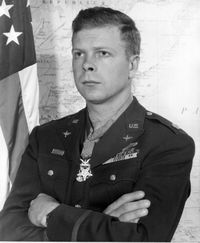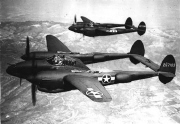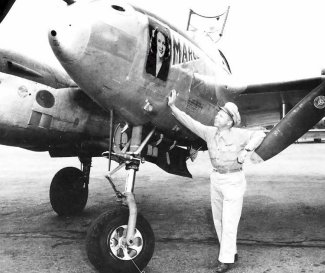
|
Richard Ira Bong, who would become America's "Ace of Aces," was born on the 24th of September, 1920, the son of a Swedish immigrant. He grew up on a farm near the small town of Poplar, Wisconsin, USA. Richard or ' Dick' as he was soon to be known as did well in high school, helped on the farm, and pursued many interests as a teenager. He played on the school's baseball, basketball and hockey teams; played clarinet in the school band; sang in the church choir; and enjoyed fishing and hunting. He became quite a good shot with a hunting rifle. Like many boys of his era, he became interested in aviation at a young age, and was an avid model builder. Bong started at Superior State Teachers College in 1938, where he enrolled in the Civilian Pilot training program, also taking private flying lessons. In 1941, he enlisted in the Army Air Corps Aviation Cadet Program. In January of 1942, just after Pearl Harbour, Dick earned his Army Air Corps commission and his coveted pilot's wings. After a few months he got the chance to train in Lockheed's big new fighter, the P-38. When General Kenney went to the Pacific in September, 1942, Bong was one of the pilots he tapped to join the 49th Fighter Group. 2nd Lieutenant Bong was assigned to the 9th Fighter Squadron, the "Flying Knights," and was sent to Australia to "hurry up and wait." While waiting for P-38s to be delivered, Bong flew with the 39th FS of the 35th FG, operating out of Port Moresby, New Guinea. On the 27th of December, 1942, while flying with the 35th, Bong scored his first aerial victories, a Zero and an Oscar. So would begin Bong's combat career.
|

